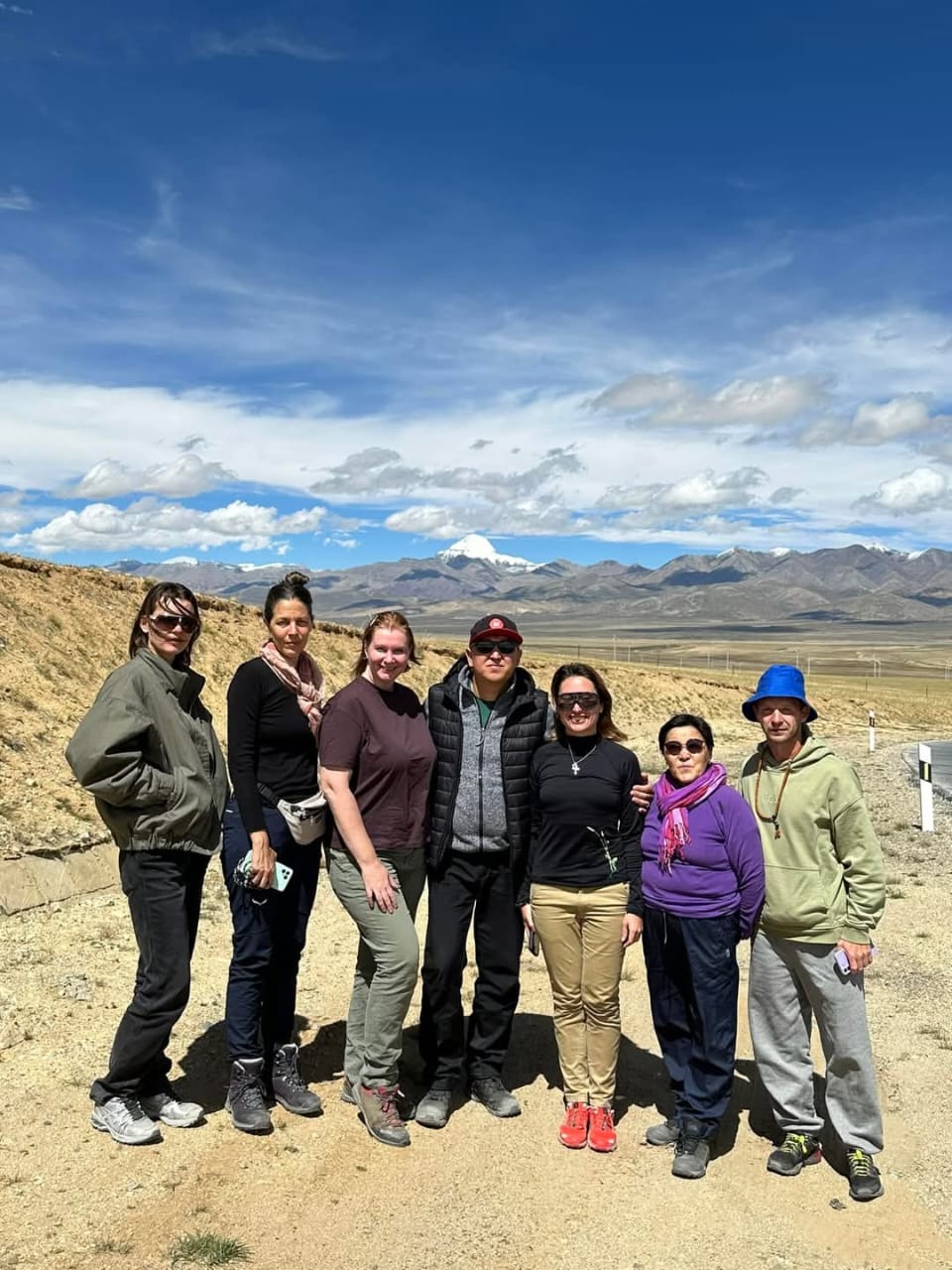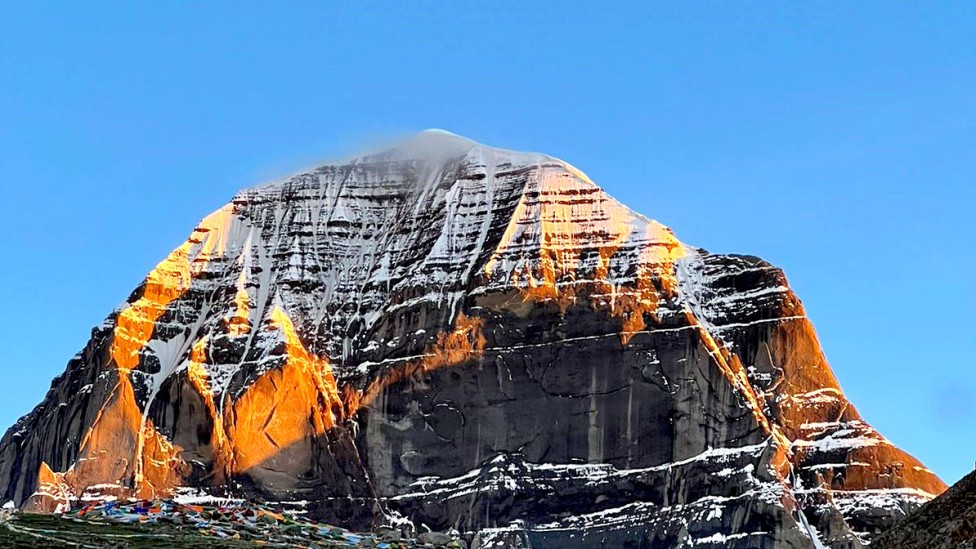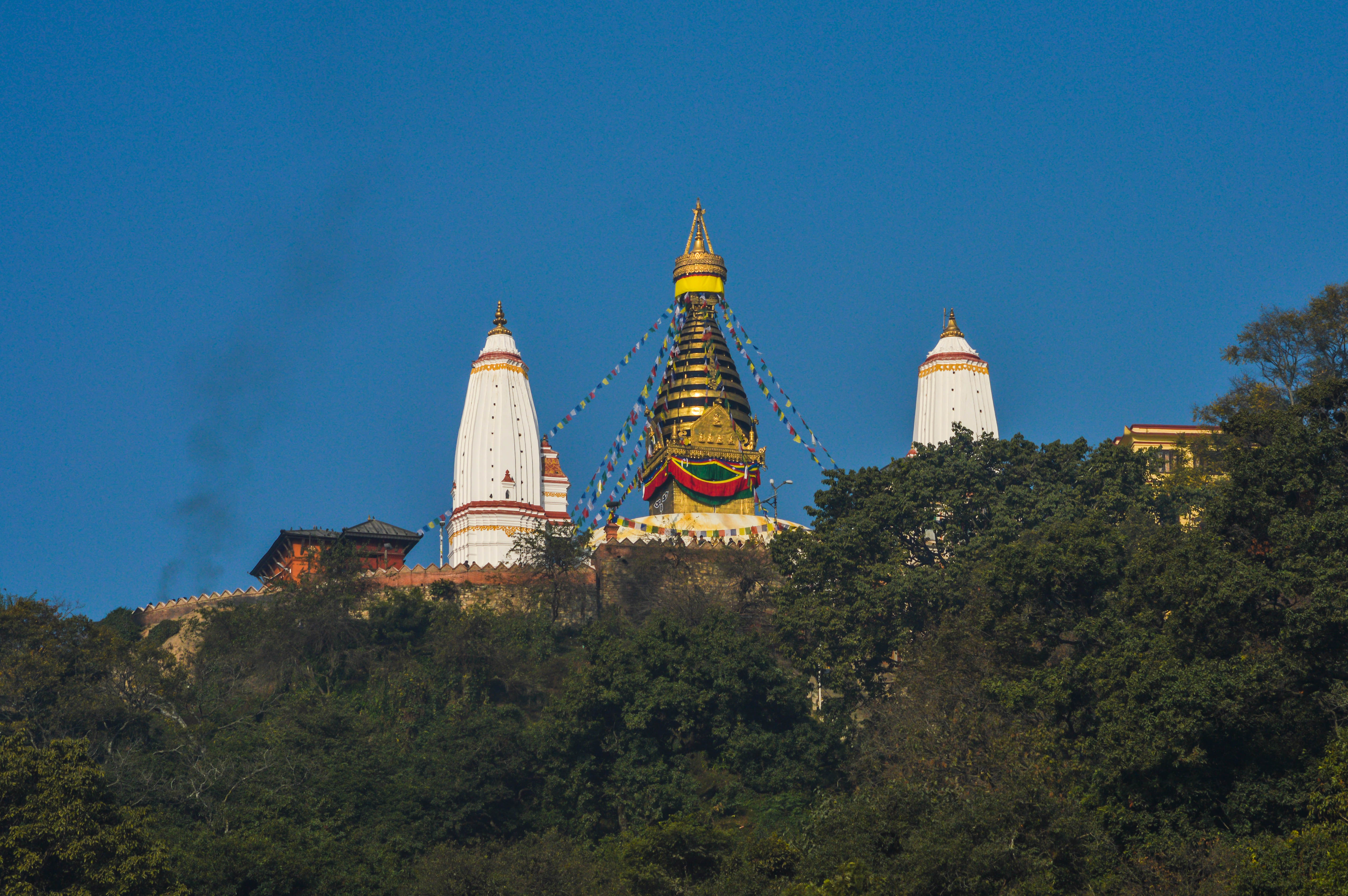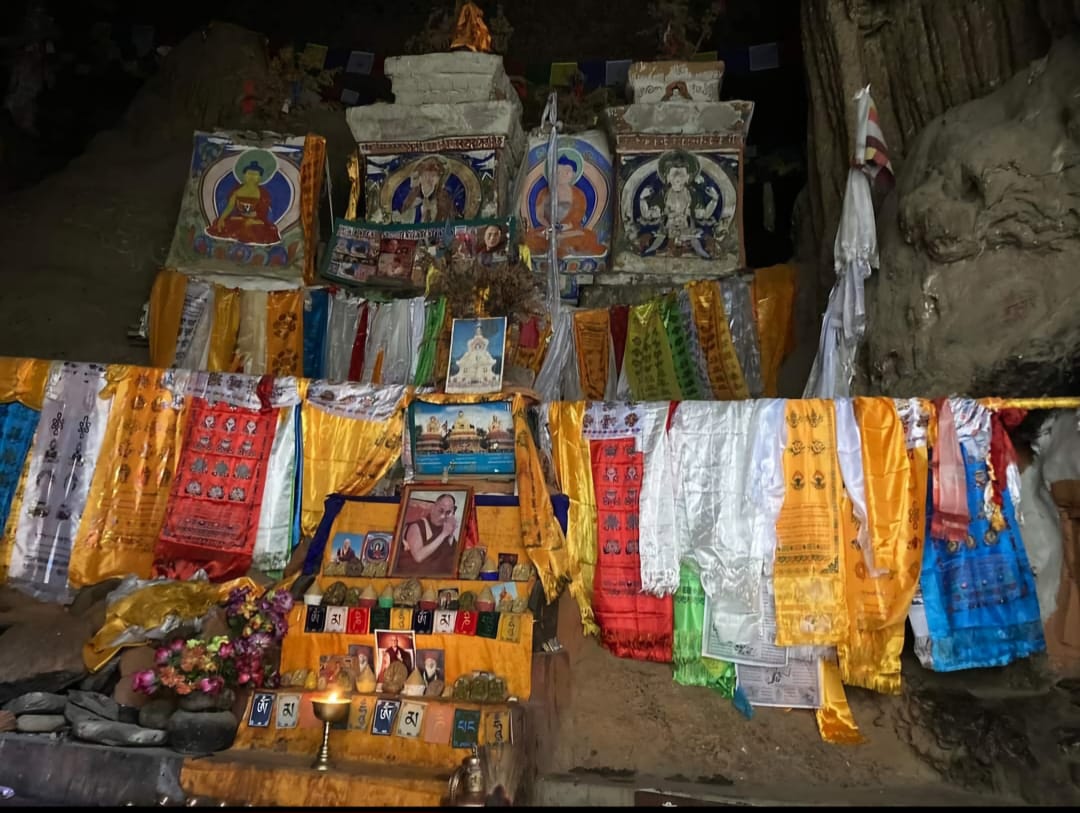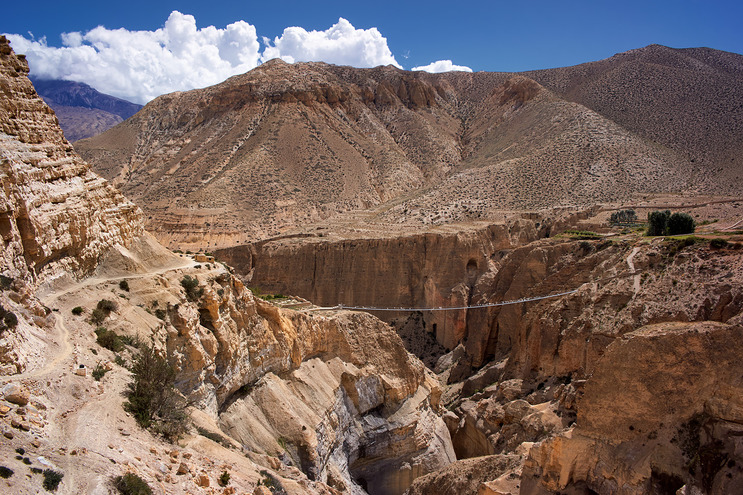The Kailash Mansarovar Tour is a pilgrimage journey to the sacred Mount Kailash and Lake Mansarovar, which are located in the Tibet Autonomous Region of China. This destination is of great religious significance for Hindus, Buddhists, Jains, and Bonpo practitioners, each associating it with different aspects of their faith.
Mount Kailash is considered the earthly abode of Lord Shiva in Hinduism, while Lake Mansarovar is believed to have been created by the gods and is an important site for spiritual purification.
Key Details about the Kailash Mansarovar Tour:
Duration: The entire tour typically lasts around 12 to 14 days, depending on the itinerary, and can be customized based on preferences.
Trekking: Pilgrims often perform a kora (circumambulation) around Mount Kailash, which is approximately 52 kilometers. This trek can be physically demanding due to the high altitude (around 6,638 meters at the summit of Kailash) and varying terrain.
Access: The tour usually begins in Nepal or India, and travelers may enter Tibet via a border crossing. The most popular routes involve flying to Kathmandu (Nepal), and then traveling overland through Nepal or China to reach the Kailash Mansarovar region.
Spiritual Significance:
- Hindus: Mount Kailash is associated with Lord Shiva and his consort Parvati. Pilgrims perform the kora for blessings and spiritual purification.
- Buddhists: The mountain is believed to be the home of Buddha Demchok, who symbolizes supreme bliss.
- Jains: Mount Kailash is associated with Lord Rishabhdev, the first Tirthankara.
- Bonpos: For Bonpo practitioners, the mountain is the center of the universe and the home of their spiritual founder.
Best Time to Visit: The ideal time for this pilgrimage is during the summer months, from May to September. During this period, the weather is more favorable, and roads are more accessible. Winter months are generally not recommended due to harsh weather conditions.
Health and Fitness Requirements: The high altitude and the rugged terrain make it important for pilgrims to be physically healthy. Altitude sickness is common, so it’s advisable to acclimatize well during the journey. It is recommended to consult with a healthcare provider before embarking on the tour.
Accommodation: The accommodation during the journey can range from basic guesthouses to tents, with the higher altitude regions offering more rudimentary options.
Best time to Visit Kailash Mansarovar
The best time to go on the Kailash Mansarovar tour depends on the weather conditions and your preferences for temperature and crowd levels. Generally, the most favorable time for the Kailash pilgrimage is:
1. May to September (Summer Season)
- Best Time for Comfortable Weather: This is the peak season for Kailash tours, as the weather is relatively warmer, with temperatures ranging from 10°C to 20°C during the day and colder at night.
- Accessible Roads: The roads leading to Kailash and Mansarovar are usually open, and it’s easier to complete the journey.
- Religious Significance: Many pilgrims prefer this period due to the better weather and less challenging conditions for the trek and circumambulation around Mount Kailash (Kora).
- Tourist Activity: Expect more crowds during this time, as it's the most popular period for the tour.
2. April and October (Pre/End of the Season)
- Weather: These months offer relatively mild weather, but the temperatures can dip, especially in the mornings and evenings. Daytime temperatures may range from 5°C to 15°C.
- Less Crowded: Fewer tourists visit during these months, so you’ll have a more peaceful experience.
- Limited Services: Some facilities and routes might be less accessible than in the peak months, so it’s important to prepare well.
3. November to March (Winter Season)
- Not Recommended: This period is generally avoided because of harsh winter conditions, including heavy snow, freezing temperatures, and closed routes. The temperatures can drop to -10°C or lower, making travel to Kailash difficult and dangerous.
- Limited Access: The region is usually closed for travel during this period due to the extreme weather conditions.
Important Notes:
- Best Time: May to September (especially June to August for warmer weather and accessible routes).
- Avoid Winter (November to March) due to harsh conditions.
Hidden Facts of Mount Kailash
Mount Kailash, shrouded in mystique and revered by millions, is not only one of the most spiritually significant mountains in the world but also a source of many hidden facts and intriguing mysteries. Over the centuries, various aspects of Kailash have fascinated pilgrims, explorers, and researchers alike. Below are some lesser-known and hidden facts about Mount Kailash:
1. The Mountain's Unique Shape:
- Perfect Pyramid Structure: One of the most striking features of Mount Kailash is its unusual pyramid-like shape. The peak has four distinct faces, each facing a different cardinal direction. The mountain's symmetry and appearance resemble a man-made structure, leading some to believe it may have been built by an advanced civilization or extraterrestrial beings. The perfect geometry of Kailash is considered sacred and symbolic in multiple traditions.
- Geological Mystery: Geologists have noted that Mount Kailash’s formation is vastly different from the surrounding peaks. Some believe that the mountain’s origin could be linked to tectonic shifts or even to some form of ancient geological process. Its isolated, flat-topped summit also adds to the mystery.
2. The Magnetic Field:
- Magnetic Anomalies: There are reports of unusual magnetic anomalies around Mount Kailash. Travelers and pilgrims have observed that compasses behave erratically in the vicinity of the mountain. Some believe that the magnetic properties of the mountain have a spiritual or cosmic significance, while others speculate that they may be linked to a mysterious energy source beneath the surface.
3. The Unexplained Disappearance of Climbers:
- Although it has been off-limits for climbers for many years, there have been instances of people attempting to reach the summit of Mount Kailash. Some climbers who set out on expeditions to scale the peak have mysteriously disappeared or faced severe accidents. These unexplained disappearances have led to the belief that divine forces or spiritual protection may be actively preventing anyone from reaching the top.
4. The Pilgrimage Around the Mountain:
- The Kora: Pilgrims who perform the sacred kora (the circumambulation of Mount Kailash) believe that completing it can wipe away all accumulated sins and ensure spiritual salvation. The kora is a 52-kilometer (32-mile) trek around the base of the mountain, which typically takes 3 days to complete. What’s intriguing is that the kora is said to have different energetic effects depending on which direction you travel around the mountain. Some reports suggest that walking the kora clockwise can purify one's bad karma, while others believe that going counterclockwise invokes spiritual transformation.
5. Lake Mansarovar’s Purification Powers:
- Healing and Cleansing: Lake Mansarovar, located near Mount Kailash, is believed to have extraordinary powers. It is said that bathing in the lake can purify the soul and even heal physical ailments. Pilgrims who take a dip in its waters claim to experience miraculous healing. Many people believe that the lake’s sacred waters possess a supernatural quality that can remove past karma, diseases, and suffering.
6. The Presence of a Mysterious "Sky Burial Site":
- In Tibetan culture, sky burials are a common ritual where the body of the deceased is left in the open to be consumed by vultures. There are reports of a sky burial site near Mount Kailash, which is believed to be of great spiritual importance. It is thought that the area has a special connection to the afterlife, and that the souls of the departed are said to ascend to the heavens, making it a sacred place for the final rites of passing.
7. The Mountain is Considered the "Center of the Universe":
- Both Buddhists and Hindus regard Mount Kailash as the center of the universe. In Hinduism, it is believed to be the residence of Lord Shiva, while for Buddhists, it is associated with the deity Demchok, who embodies supreme bliss. The unique position of Kailash, both geographically and spiritually, has led to the belief that it is the axis mundi (cosmic axis) that connects the earthly realm with the divine.
- The mountain's significance as a cosmic center is also supported by ancient texts, like the Kailash Mahatmyam, which describe it as the axis around which the world revolves. Even from a geographical perspective, Kailash is seen as being positioned at the heart of the Tibetan plateau.
8. Inaccessibility and Divine Protection:
- Throughout history, attempts to climb Mount Kailash have been thwarted in mysterious ways. There is a widespread belief that divine forces, or the protective spirits of the mountain, prevent people from reaching the summit. Many who tried to scale the peak reported extreme weather conditions, illnesses, or sudden accidents, which led to the belief that Mount Kailash is guarded by spiritual entities that ensure its sanctity is preserved.
- One of the most mysterious aspects is that no one has successfully climbed Kailash, and it remains the only major peak in the world that has never been scaled, despite its relatively moderate height (around 6,638 meters or 21,778 feet). This factor has fueled many myths that the mountain is protected by cosmic powers.
9. Sacred Sound Waves and Vibrations:
- Some visitors to Mount Kailash have reported hearing strange and mysterious sounds or vibrations around the mountain. These vibrations are believed to have a spiritual significance—some claim that they are the divine sound of the universe. Others believe that the sound may be connected to the unique electromagnetic forces of the region.
10. Ancient Legends and Prophecies:
- Various ancient texts and prophecies speak of the spiritual significance of Mount Kailash. For instance, some believe that prophecies of the future suggest that one day, the world will experience a great spiritual awakening or event centered around the mountain. This prophecy is believed to be closely linked to the concept of Kalachakra (Wheel of Time) in Tibetan Buddhism, where Kailash represents a timeless realm.
11. Mysterious Stones and Ancient Ruins:
- Some explorers and researchers have reported discovering mysterious stones and ancient ruins near the base of Mount Kailash. These include carvings, sacred inscriptions, and artifacts that seem to hint at an ancient civilization that once revered the mountain as a sacred center of worship and power. However, many of these discoveries remain unexplained, and there is little concrete evidence regarding their origins.
Mount Kailash continues to captivate those who are drawn to its mysteries, whether from a spiritual, cultural, or scientific perspective. Its unexplained phenomena, unique features, and deep religious significance make it a place of immense fascination and reverence. For those who seek to understand its hidden truths, the mountain remains a powerful symbol of the unseen, the divine, and the inaccessible mysteries of the universe.
Spiritual Significance of Mount Kailash
Mount Kailash holds profound spiritual significance for several religious traditions, making it one of the most revered and mystical mountains in the world. Its importance extends beyond just physical worship; it symbolizes the divine presence and is believed to be the center of the universe. Here's a deeper look into its spiritual significance for different faiths:
1. Hinduism:
- Abode of Lord Shiva: In Hinduism, Mount Kailash is considered the earthly home of Lord Shiva, one of the principal deities in the Hindu pantheon. Lord Shiva is often depicted meditating on Kailash with his consort Parvati. The mountain is also associated with the Himalayas, the abode of sages, ascetics, and gods.
- Sacred Peak: For Hindus, the circumambulation (kora) of Mount Kailash is an important ritual, symbolizing the purification of the soul. Pilgrims believe that performing the kora (walking around the mountain) will erase their sins, bring good fortune, and help attain Moksha (liberation from the cycle of birth and rebirth).
- Significance of Lake Mansarovar: Lake Mansarovar, located near Mount Kailash, is regarded as a sacred body of water. According to Hindu belief, bathing in the lake purifies the soul and ensures the removal of past sins. It is also said that drinking the lake's water and performing prayers there can aid in spiritual enlightenment.
2. Buddhism:
- Mount Kailash as the Center of the Universe: For Buddhists, Mount Kailash represents the axis mundi, the center of the world. It is believed to be the abode of Demchok, a tantric deity who embodies supreme bliss and enlightenment.
- The Sacred Kora: The practice of walking around Mount Kailash is similarly important in Buddhism. Buddhists perform the kora to gain spiritual merit, purify karma, and advance toward enlightenment. The kora is not just a physical act, but a form of meditation, and it’s believed that completing it in one’s lifetime can lead to attaining Nirvana.
- Symbolism of the Mountain's Shape: Some Buddhists believe that the mountain’s shape represents the Mandala, a spiritual symbol representing the universe, which is often used as a guide for meditation and reflection.
3. Jainism:
- Sacred to Lord Rishabhdev: In Jainism, Mount Kailash is associated with Lord Rishabhdev (also known as Adinatha), the first Tirthankara (spiritual teacher) in the Jain tradition. The mountain is believed to be the place where Lord Rishabhdev attained Kevala Jnana (omniscience) after a long meditation.
- Spiritual Journey: For Jains, visiting Mount Kailash is a sacred pilgrimage, symbolizing the quest for spiritual knowledge and liberation. Just as with Hindus and Buddhists, circumambulating the mountain is considered a spiritual practice leading to the purification of the soul.
4. Bon (Tibetan Religion):
- Bonpo Beliefs: For practitioners of the Bon tradition, which predates Buddhism in Tibet, Mount Kailash is the most sacred place. The Bonpo people believe that the mountain is the abode of Shenrab Miwoche, the founder of the Bon religion. It is also said to be the center of the universe and the axis around which all life revolves.
- Spiritual Significance of the Mountain and Lake: Like Buddhists and Hindus, Bonpos believes that circumambulating the mountain is a way to purify one's soul, accumulate spiritual merit, and achieve enlightenment.
5. General Spiritual Beliefs:
- A Sacred Realm: Mount Kailash is often thought of as a divine realm that bridges the human and the supernatural. It is considered a spiritual pilgrimage site not only for the followers of specific faiths but also for those seeking inner peace, personal transformation, and cosmic connection.
- Alignment with the Cosmos: According to certain esoteric beliefs, Mount Kailash is in perfect alignment with the cosmic energies of the universe. It is believed to act as a spiritual conduit between the Earth and higher realms of existence.
- Spiritual Renewal: Many pilgrims undertake the difficult journey to Kailash seeking not just religious merit, but deep spiritual renewal. It is considered one of the holiest and most powerful places on Earth, with the potential to heal mental, emotional, and physical ailments.
Other Spiritual Insights:
- Chakra and Energy: The mountain is sometimes said to align with various energy points, or chakras, of the Earth, making it an especially powerful spiritual center.
- Sacred Geography: The unique shape of the mountain, often depicted as a pyramid or a peak with four faces, is thought to have symbolic meanings related to balance, harmony, and the integration of opposites.
- Inaccessibility and Mystery: The inaccessibility of Mount Kailash has added to its mystique. Its remoteness and harsh conditions only enhance its sacred status, as reaching the site requires determination, effort, and devotion.
In summary, Mount Kailash represents a spiritual center for numerous religious traditions, each attributing its own significance, from the abode of gods to the axis of the universe. Whether through rituals, prayers, or pilgrimages, this sacred mountain has been a place of profound spiritual awakening, self-reflection, and divine connection for centuries.
Why Mount Kailash is Unclimbable
Mount Kailash is considered unclimbable not because it is physically impossible to climb, but because of its deep spiritual significance and religious prohibitions. The mountain is seen as a sacred site by multiple religious traditions, and this reverence has led to a widely accepted belief that it should not be scaled. Here are the main reasons why Mount Kailash remains unclimbed by the general public:
1. Sacred to Multiple Religions:
- Hinduism: For Hindus, Mount Kailash is the earthly home of Lord Shiva, one of the most important deities in the Hindu pantheon. Attempting to climb the mountain is seen as disrespecting Lord Shiva's abode and the sanctity of the mountain.
- Buddhism: Mount Kailash is also sacred to Buddhists, as it is believed to be the home of Demchok, a tantric deity embodying bliss and enlightenment. Climbing the mountain is seen as a violation of this spiritual significance.
- Jainism: For Jains, Mount Kailash is the place where Lord Rishabhdev (the first Tirthankara) attained Kevala Jnana (omniscience), further adding to the belief that the mountain should remain undisturbed.
- Bon (Tibetan religion): For Bonpos, Mount Kailash is the center of the universe and the dwelling place of the deity Shenrab Miwoche. As with the other traditions, climbing it is seen as an act of desecration.
2. Religious Prohibition:
Many religious and spiritual leaders have discouraged climbing Mount Kailash due to its sacred nature. In fact, the government of Tibet (China) has officially prohibited the climbing of Mount Kailash. This prohibition is deeply rooted in the belief that the mountain should remain untouched by human hands, allowing it to preserve its spiritual purity.
- Pilgrimage Over Conquest: For pilgrims, the journey around the mountain (the kora) is considered a spiritual act and a way of seeking blessings. Climbing it would shift the focus from devotion and reverence to human achievement, which is incompatible with its sacred status.
3. The Mountain’s Shape and Spiritual Geometry:
The four-sided shape of Mount Kailash, often described as a pyramid or diamond-like peak, is symbolic in many spiritual traditions. It is said to represent the four directions or the axis of the world, making it a mystical and central feature of the universe. The belief is that to disturb or desecrate this sacred shape by attempting to climb it would disrupt the balance of the cosmos.
4. The Mysterious and Unfathomable Nature:
- Physical Inaccessibility: While not technically impossible to climb, Mount Kailash’s harsh terrain and extreme altitude (over 6,600 meters or 21,000 feet) make it an incredibly difficult peak to scale. The summit is often covered in clouds, and weather conditions can be severe. These physical challenges, combined with the lack of established climbing routes, make it an inhospitable mountain.
- Supernatural Beliefs: Some people believe that divine protection prevents anyone from reaching the summit. Pilgrims who attempt to climb have reportedly faced bad weather, accidents, and other misfortunes, leading to a belief that the mountain "punishes" climbers. This has contributed to the idea that Mount Kailash is not meant to be climbed.
5. Historical and Cultural Traditions:
- Pilgrimage Route: Instead of climbing the mountain, devotees embark on a circumambulation (kora), which involves walking around the base of the mountain. This pilgrimage is believed to purify the soul and bring spiritual benefits. The idea of walking in reverence around the mountain has been practiced for thousands of years, further reinforcing the idea that the mountain should remain untouched.
- Cultural Respect: Tibetan and local communities around Kailash have deep respect for the sacred nature of the mountain. The long-standing tradition of pilgrimage and reverence has been passed down for generations, and many feel that climbing the mountain would be a betrayal of their culture and faith.
6. Legends and Myths:
Over the centuries, various legends and myths have emerged about Mount Kailash, many of which emphasize the consequences of disturbing the sacred mountain. One popular belief is that those who attempt to climb the peak will be punished by divine forces, either through accidents, illness, or other misfortunes. These stories reinforce the belief that the mountain is not to be scaled by humans.
7. Government Restrictions:
The Chinese government, which administers Tibet, has imposed a ban on climbing Mount Kailash. This regulation ensures that the sacredness of the mountain is maintained, aligning with the religious and cultural importance of the site. Travelers are only allowed to engage in the kora and other pilgrimage activities around the mountain, not to ascend it.
Conclusion: Why Mount Kailash is Unclimbable?
Mount Kailash remains unclimbed primarily due to its immense religious significance and the belief that it is a sacred space not meant to be conquered by human ambition. The combined force of spiritual reverence, cultural traditions, and government regulations has ensured that the mountain stays untouched by climbers. For many, the highest form of respect and devotion is not to scale its summit, but to approach it with humility, perform the sacred kora, and seek spiritual enlightenment through reverence rather than conquest.
